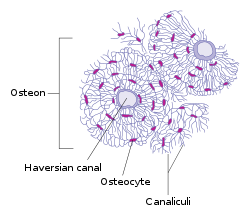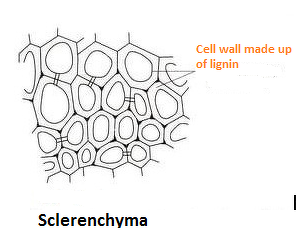Diversity in Living Organisms
There are many plants and animals
around us. We know very little about them.
Most of them belong to a world not visible
to the naked eye, as you have already studied
in the chapter on, ‘Microbial World’. The
types of organisms that we have studied so
far are also in lakhs, existing from mountain
peaks to deserts and plateaus to the deep
oceans, from extreme cold conditions to
extreme hot ones and many more, such
diversity is the symbol of nature.
Studying about diversity as it is, would
be a very chaotic and difficult task.
Moreover describing and naming each
organism individually without knowing the
organisms that might be sharing common
characteristics would be insignificant. Thus
people who have tried to study diverse
organisms in nature have tried to make
groups of them on the basis of differences
and similarities found among them. This
helped to identify largely varied and closely
related groups of organisms.
Thus our knowledge of the entire living
world depends on first making meaningful.
groups to carry out our study in a
systematic manner.
In this lesson we will try to study the
diversity present among several living
organisms, classify and appreciate nature's
miracle
Diversity in plants:
Here as we finish our activity we would have established some common characteristics of land plants- those having two seed leaves are called dicotyledons, while those having single seed leaf are
called monocotyledons.
They share some common
characteristics like venation (dicots have
reticulate/branched, while monocots have
parallel venation).
By doing the above activity we can
understand how grouping is done in biology
by observing the similarities and
differences among diverse groups in the
sample under study. We will do some
similar exercises with animals now.
Diversity in animals:
Observation of external characters
of insects
Collect housefly, mosquito, ant, dung
beetle, butterfly, moth and cockroach from
your surroundings. Observe them carefully.
Take the help of a magnifying lens to get a
closer view.
Are all insects of the same size or
shape?
What differences did you observe
with regard to legs?
What differences did you observe
with regard to wings?
Is there any relationship between
the number of wings and legs?
Did you find any two insects with same
characters? If yes, display in the class. If
no, note down the differences in your note
book.
Even though all these are insects and
you see that they show several differences.
Can you find at least one character that is
similar to the whole group, what is it?
How do you group insects? Would it
be based on number of body segments or
number of legs they have?
The examples of insects given above
are of different species. Hence they show
a lot of difference and we say they are
diverse. If we were to compare insects of
the same type that is to say two houseflies
we will be perhaps still find some
differences(try it out yourself) and these
would be variations.
Let us see some variations that are
present in human populations
Monera
Observe the given slides carefully and
say
How many cells are found in the
organism?
Do you find any nucleus in the
middle of the cell?
Are there any other cell organelles
found in the cell?
By observing the above characteristics
we conclude that Monerans are:
A. One-celled organisms
B. Cells have no membrane bound nucleus
C. Reproduce by splitting into two.
D. Absorb nutrients from outside their
bodies
E. They move with the help of
locomotory organs like flagella, cilia
or hair like structures present on them.
F. Some monerans cause diseases, but
others are helpful to people.
G. Examples: bacteria
Nostoc
Bacteria
Three major groups of organisms come under this group. They are archaebacteria (ancient bacteria present till date, some species found in hot springs come under this), eubacteria (streptococcus, rhizobium, e.coli etc) and cyanobacteria which are also called blue green bacteria as they appear similar to blue green algae externally but internally are more like bacteria(but they are not bacteria).
Protista (protoctista):
Observe the given slides carefully and
say
How many cells are found in the
organism?
Do you find any nucleus in the
middle of the cell?
Are there any other cell organelles
found in the cell?
Are there any locomotory organs
in them?
Characteristics of protists
A. Most are one-celled (unicellular),
but some have many cells.
B. Cells have a membrane around the
nucleus.
C. Some get nutrients and energy by
eating other organisms.
D. Some get energy from the sun, and
nutrients from the water around
them.
E. These live either solitary or in a
colony.
F. Some of the cell organelles are
present inside the cell.
G. Mostly reproduce by splitting into
two (Binary fission).
H. Examples are paramoecium,
amoeba, algae, etc.
Amoeba
Paramecium
Fungi:
Observe the specimen and diagrams
given below and answer the following
questions.
What is the colour? Can they
prepare their own food as green
plants?
Make a sketch of the main parts of the
body
Do you find root like structures?
Guess why?
Characteristics of fungi
A. Most are many-celled (multi
cellular) and some are one-celled
organisms.
B. Eukaryotes with well defined
prominent head (you usually see
them propping out from the ground
or on barks of trees during rainy
season).
C. Get nutrients and energy by
absorbing/ digesting the surface
they live on through root like
structures which are fine thread
like parts of their body.
D. Most of these reproduce by spores.
E. Examples are yeast, mushrooms,
bread moulds, and lichens.
Plantae:
Several plants grow around you. Do
all of them produce seeds?
Think if grass produces seeds
(hint:compare with rice plants and
think).
Name some plants that produce
seeds.
Which part of the plant produces
seeds? Where is it located?(recall
structure of plant parts studied in
earlier classes)
Do all plants have a definite
structure to produce seeds?
Plants are diverse in nature. The basis
of classifying them is the way they acquire
their food, the type of reproductive
structures they have and the way they
reproduce. They are multicellular,
eukaryotic with cell walls. They are usually
autotrophs and use mainly chlorophyll for
photosynthesis.
The first level of classification among
plants depends on whether the plant body
has well differentiated, distinct parts.
The next level of classification is based
on whether the differentiated plant body has
special tissues (vascular tissues) for the
transport of water and other substances
within it. Further classification looks at the
ability to bear seeds and whether the seeds
are enclosed within fruits.
Let's look at some plants like moss and
ferns more closely.
Funaria
Activity:
Observation of moss plants through
hand lens.
You can collect mosses from the
greenish velvety growth on bricks during
the rainy season. Scrap a bit of this greenish
growth over a slide and observe with a hand
lens or under a dissection microscope.
These are not exactly flowers but
structures that contain seed like structures
called spores. Spores contain very little
food while the seed stores a lot of it.
Moreover where seeds are produced from
ovule of flower, spores are produced within
structures called as sporangium in a
different manner.
Sporophylls of Cycas & Fern
Coelenterata/Cnidarians:
These are aquatic forms showing more body design differentiation when compared with Poriferans. There is gastrovascular cavity in the body. The body is made up of two layers of cells: one forming the outer layers while the other forming the inner layers. Some
live in colonies ,like the corals that are tiny nearly 3 to 56 mm but their colonies where we may find several types of them which
form coral islands huge as say an island (1800 sqkm ), is called coral reefs while others like hydra, jellyfish and sea anemones are common examples.
Hydra
Platyhelminthes:
The body of animals in this group is far
more complexly designed than in the two
other groups we have considered so far. The
body is bilaterally symmetrical, meaning
that the left and the right halves of the body
have the same design. There are three layers
of cells from which differentiated tissues
can be made, that is why such animals are
called triploblastic. This allows outside and
inside body linings as well as some organs
to be made. There is thus some degree of
tissue formation. However, there is no true
internal body cavity or coelom, in which
well developed organs can be
accommodated. The body is flattened
dorsoventrally, from top to bottom, that is
why these animals are called flatworms.
They are either free living or parasitic.
Some examples of free living animals like
planarians or parasitic animals like
liverflukes and tapeworms.
Tapeworm
Nematoda
The nematode body is also bilaterally symmetrical and triploblastic. However, the body is cylindrical rather than flattened. There are tissues, but no real organs, although a sort of body cavity or a
pseudocoelom is present. These are very familiar as parasitic worms causing diseases, such as the worms causing elephantiasis (filarial worms) or the wormsin the intestine(roundworm or pinworms).
Annelida (Segmented Worms):
Annelida animals are also bilaterally
symmetrical and triploblastic, but in
addition they have a true body cavity. This
allows true organs to be protected in the
body.
There is, thus, extensive organ differentiation. This differentiation occurs in a segmental fashion, with the segments lined up one after the other from head to tail. These animals are found in a variety
of habitats– fresh water, marine water as well as on land.
Protochordata:
These animals are bilaterally
symmetrical, triploblastic and have a
coelom. In addition, they show a new
feature of body design, namely a
notochord, at least at some stages during
their lives. The notochord is a long rod-like
supporting structure (chord=string) that
runs along the back of the animal separating
the nervous tissue from the gut. It provides
a place for muscles to attach for ease of
movement. Protochordates may not have a
proper notochord present at all stages in
their lives or for the entire length of the
animal.
Protochordates are marine animals.
Ex. Herdmania, Amphioxus.
Herdmania
Amphioxus















































